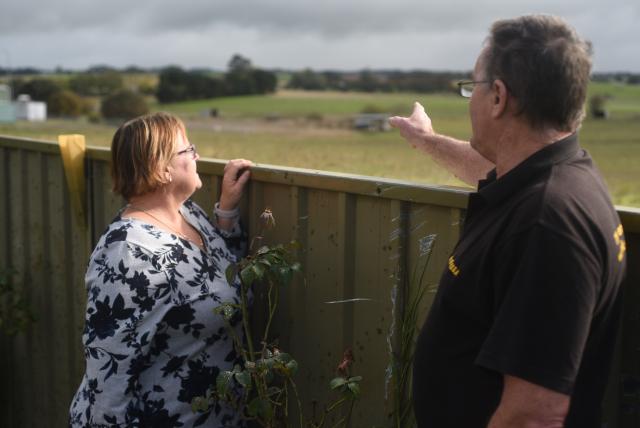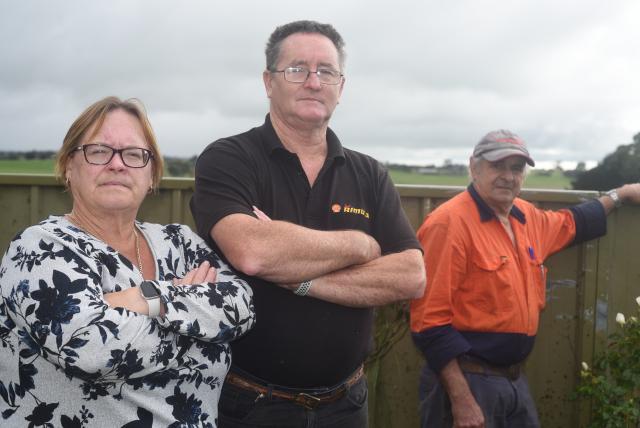Charlotte Varcoe
A WASTEWATER treatment plant will be built on an empty block in Suttontown owned by Mondelez International despite more than 20 residents opposing the project.
Last week, the planned treatment plant was given the stamp of approval by the Limestone Coast Southern Regional Assessment Panel after several deputations were also made by local residents against the plant.
The treatment plant is expected to be built behind the milk processing plant and will include inlet screening and odour control, a covered anaerobic lagoon,. biogas recovery and heating which will take place within the enclosure as well as sludge and treated wastewater tanks and a tanker collection point.
Within the report, it was stated the Environmental Protection Authority (EPA) has approved the plant subject to 11 conditions.
These conditions includes a bio-filter commissioning plan, a detailed commissioning plan being submitted to the EPA and the operation of the facility being undertaken in accordance with the noise mitigation recommendations.
Other conditions include a detailed wastewater management system, a detailed design for the stormwater management system, correct storage of chemicals, fuel, oils and more as well as the banks or embankments of the lagoon being landscaped and compacted to improve its stabilisation and minimise the risk of erosion among other conditions.
According to Mondelez, there will also be “significant landscaping and noise control”.
The treatment plant will take in water used within the factory to clean which cannot be reused.
It will treat the water before being transported to Mil-Lel where farmers will use it on their properties.
Local residents and adjacent landowners Sylvia and Shane Taylor said they were disappointed with the plant receiving the go-ahead despite the obvious community backlash.
Mr and Ms Taylor’s property is less than 100m from the proposed site for the plant and they believe they will be able to see the plant from their back fence.
The couple attended the recent meeting of the assessment panel and told The Border Watch they felt as if the panel had “already made up its mind”.
“Our main concern is that the plant is going to be basically in our backyard and it is in very close proximity to our back door,” Mr Taylor said.
“This is supposedly okay with the Environmental Protection Authority and we know it will run 24 hours, seven days a week.
“Whether that is the burners blasting or whether it is a constant hum, we don’t know.”
He said despite the conditions provided by the EPA, they remained concerned about noise pollution and potential leaks.
“The EPA has supposedly said the noise level will be acceptable but we don’t know what the noise level is expected to be,” Mr Taylor said.
“Nobody has been able to get a hold of the attachments that were presented to committee members and it was not mentioned there is a house next to the plant but it said the southern neighbourhood zone was an acceptable distance away.”
The Taylor’s said they were also concerned about the outlook from their backyard, which was currently rural scenery.
“Our outlook from our backyard will not be a rural outlook,” Mr Taylor said.
“It will be an industrial wastewater treatment plant which just seems unfair.
“We have not been considered in the equation and the value of our house will go down because who wants to buy a house that is going to be backed onto a treatment plant.”
Also worried about the value of his property was fellow resident Richard Wilson who rents out a home across the road from the proposed truck entrance.
Mr Wilson also trained horses on the proposed land where the treatment plant was expected to be built and said he was unsure if that could continue.
“I have stables there with racehorses in it and this could stop me from training the horses because working them past the burn-off could be quite interesting,” Mr Wilson said.
“I am also concerned about how much it is going to depreciate my rental property and worried about future tenants and whether they would want to live so close to a wastewater treatment plant.”
He said other concerns was whether the lagoon would leak or air quality such as resident Ross Peters expressed.
Mr Peters said he was worried there would be gasses such as hydrogen sulphide, methane or ammonia coming from the treatment plant.
“I am worried about the smell because hydrogen sulphide can be toxic to humans and is very corrosive which means my roof might rot or all sorts of weird things could happen,” he said.
“A lot of us brought land here because we wanted a little bit more than what a normal block in town is, but we did not want to be too far out of town, so it really ticked a lot of boxes nearby.”
The EPA said Mondelez had committed to build the treatment plant to “improve the quality of the wastewater from its manufacturing plant”.
“As the closest residential property at the Mondelez site is less than 300m away, the company committed to adopting operational noise and air quality management measures to demonstrate it would not cause adverse impact on homes,” an EPA representative said.
“The EPA will enter various conditions on its licence which will include conditions appropriate for the management of the plant, including maintaining the wastewater treatment plant, monitoring of the wastewater quality and quantity, and ensuring all reasonable and practical measures are taken with regards to managing noise and odour.
“The wastewater treatment plant will improve the quality of the wastewater coming from the plant and therefore make irrigation processes more environmentally sustainable… it will help protect groundwater in the region and therefore protect the potable water supply for Mount Gambier.”
A Mondelez spokesperson said the company was committed to growth by making its products in the “right way” with a “positive impact” on people, planet and the community.
“We have already taken significant steps in our journey to minimise our environmental footprint – installing solar that now covers about six per cent of our total energy needs, plus reducing water and energy use, and minimising food waste,” they said.
“To make Philadelphia Cream Cheese, a significant amount of water is needed for cleaning and that water cannot be re-used.
“A major investment in a treatment plant means we will clean the water to a quality that can be re-used for sustainable irrigation on near-by farms and we have listened carefully to community feedback and have worked closely with the EPA on the design and placement of the plant.”









